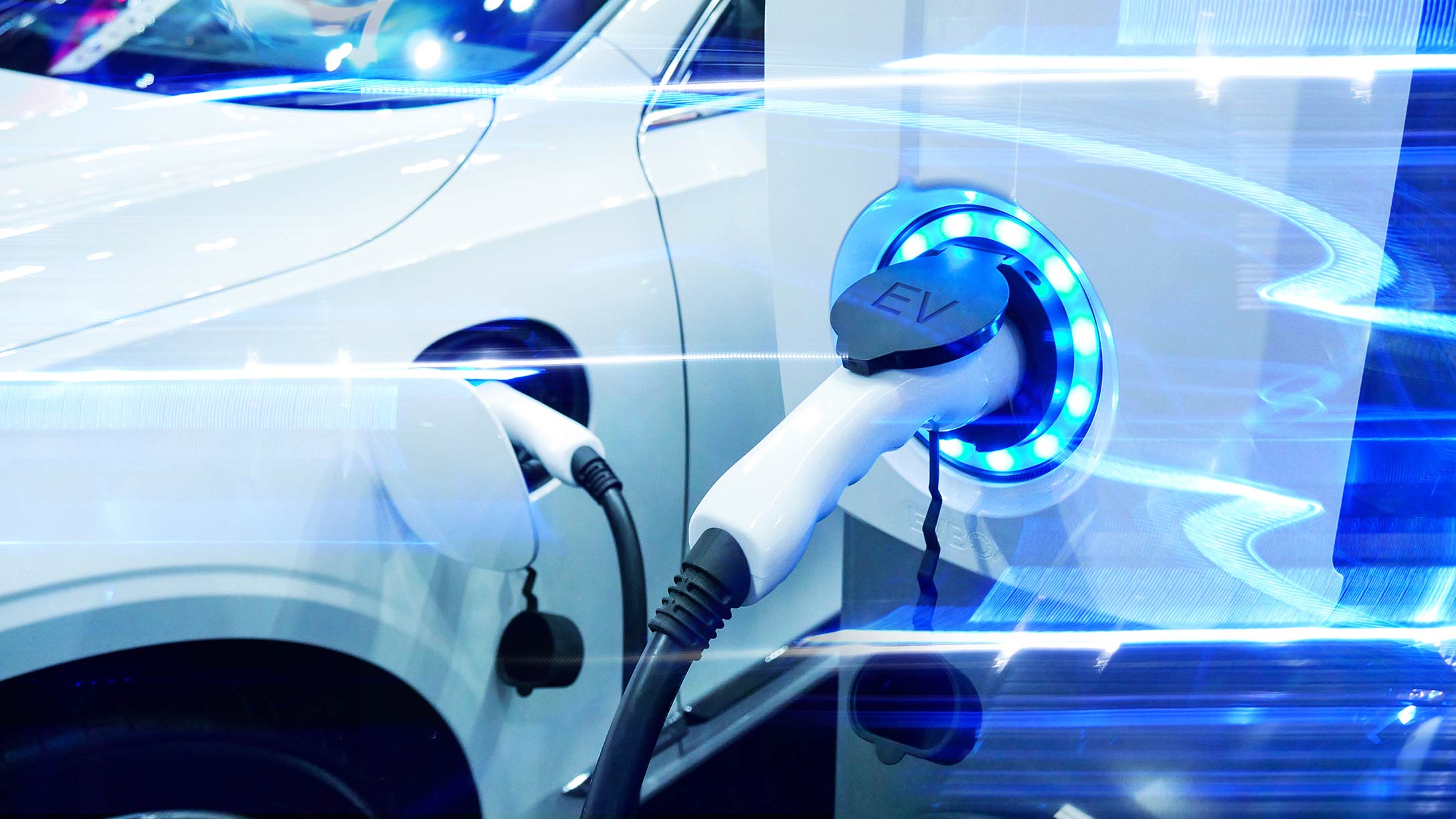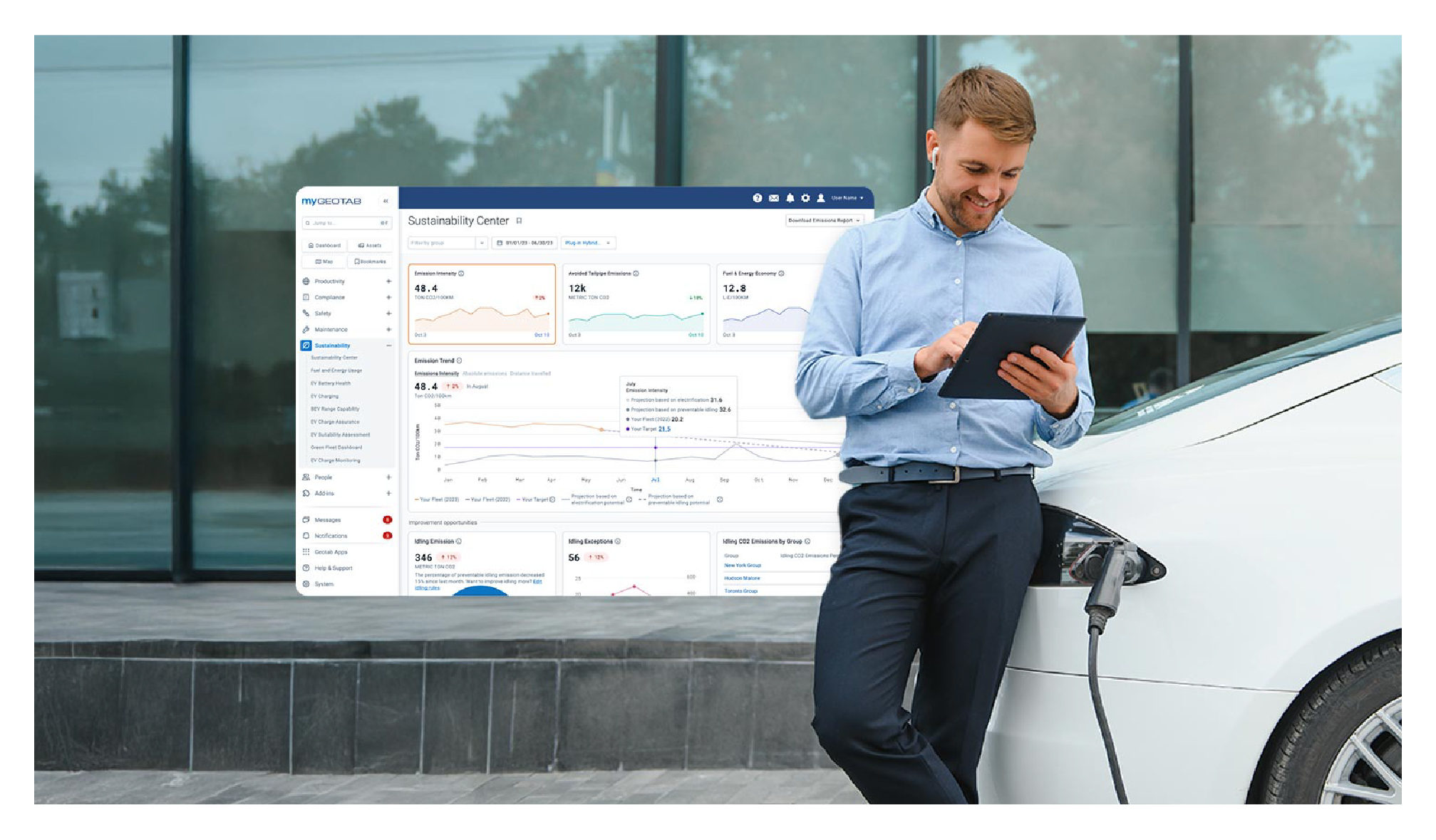Fleet EVolution: How innovation is driving electrification
EVs have come a long way over a short amount of time and they are no longer limited to small passenger vehicles with a limited range.

Electric vehicle adoption has grown exponentially. A recent BloombergNEF report stated that there are 20 million passenger EVs and 1.3 million commercial EVs on the road. With governments implementing zero-emission mandates and other environmental regulations, we can expect to see the number of EVs on the road continue increasing, offering companies more choices and an opportunity to achieve their sustainability goals.
A brief history lesson on the plug-in electric vehicle
While electric cars were popular at the turn of the 20th century, it wouldn’t be for another 100 years that the modern electric car would make its debut. There were some limited releases in the ‘90s, such as the GM EV1, but it would be more than a decade later before Tesla’s Roadster, the first battery electric vehicle (BEV), and BYD’s F3DM compact sedan, the first plug-in hybrid electric vehicle (PHEV), entered the market. Both of these vehicles had small production runs, but they acted as proof of what could be possible with “true EVs.”
Over the next few years, EVs were slowly adopted, but range limitations and a lack of diverse models meant that the growth was primarily on the consumer side. The mid-2010s redefined the future of fleets as newer and more robust vehicles began to enter the market with increasing range capabilities.
Are today’s EVs ready for fleet applications?
Most of the EVs being used by fleets today are in the light-duty and passenger classes, with a notable exception being transit buses – particularly in China. This is primarily a result of the fact that the existing models are suited for their use. Most newer BEVs, like the Fiat E-Ducato van, have an effective range between 200-300 miles, which means they can handle most daily driving needs on a single charge. And with improvements to charging technology, these EVs can be fully charged overnight and will be ready for use the next day.
The area seeing the most growth right now is the light- to medium-duty sectors, specifically in industries like last-mile delivery. With high utilization and predictable shorter-distance routes, EVs appear to be a natural fit. Fully electric delivery vans are being used by some of the largest commercial fleets around the world.
- Amazon ordered 100,000 electric delivery vans to be fully deployed by 2024
- DHL’s “Green Fleet” expansion is a part of their goal to have zero-emissions logistics by 2050
- UPS has committed to purchase up to 10,000 EVs and deploy them across their global fleet
These are just some of the companies who have embraced electrification and many more have made commitments to completely transition away from internal combustion engine (ICE) vehicles over the next decade. With new exciting models like the Ford F-150 Lightning pickup truck and the GM Brightdrop EV600 vans, you can expect more fleets to transition to EVs.
The last remaining industry to explore is heavy-duty. Overall, EV adoption has been slower with heavy-duty vehicles, and different industries are seeing different levels of success. For example, long-haul delivery is still in the early stages of electrification due to carrying capacity and range challenges. However, even in the heavy-duty trucking market, several vehicle options exist, and they are currently being used for regional haul and yard trucks.
Additionally, electric transit and school buses have made significant headway and there are currently over half a million electric buses in circulation. Even though it may currently be behind in terms of adoption, the heavy-duty transportation industry is becoming a focus of regulatory action as it is a significant contributor to carbon emissions.

What are some regulatory highlights fleets should be aware of?
Addressing climate change is becoming more of a global focus. As a result, governments are implementing various mandates concerning transportation – ranging from additional tolls or fees to complete ICE sales bans and zero-emission areas. While all of these initiatives have the same goal of reducing greenhouse gas (GHG) emissions, the methods and target dates vary by country, region or even city.
Restricting the sale of ICE vehicles is one of the more common mandates that governments have begun implementing. However, there are different approaches to executing it. For example, Norway will be banning the sale of new ICE passenger cars, light-duty commercial vehicles and city buses by 2025. In the United States, President Joe Biden announced a target of 50% electric vehicle sales share by 2030. However, at the state level, several have introduced an ICE ban for passenger car sales by 2035. California has adopted a rule to phase out medium- and heavy-duty ICE trucks, with several other governments stating similar intentions.
Another method for encouraging electrification is by restricting where ICE vehicles can operate. This is typically done by local governments and many European cities already have ‘Low- and Zero-Emissions Zones’ or ‘Zero emission areas,’ which only zero-emission vehicles can access.
As we begin to see the impact of these initial mandates in leading countries like Norway, the UK and much of the EU, it is likely we will see these used as a template for others to follow suit. For fleets who want to continue operating in these regions, it will be imperative that they begin researching how to incorporate EVs as soon as possible as well as understand the individual rules in the cities, counties and countries they operate.
Where do fleets start planning the electrification journey?
Timelines may vary, but one thing is clear – EVs are coming fast and they are here to stay. There is a lot to consider when adding EVs to your fleet and it is critical that fleets begin to explore electrification. This begins with understanding the broad steps to adopting vehicles and selecting a strong partner to support the full electrification journey.
Geotab is committed to supporting new and in-demand EVs
The Geotab platform is a leading telematics solution that helps organizations effortlessly integrate the EV models that work best for their fleet by optimizing their EV operations and charging. Geotab provides rich data support for over 300 EV models so fleet managers can monitor real-time battery state-of-charge, charging power, charging energy, driving and auxiliary energy.
Geotab also offers a number of data-driven tools and analyses to help fleets better understand EVs and electrify their fleet with confidence.
Complementary tools and analyses powered by the largest dataset for real-world EV performance
- EV Suitability Assessment (EVSA) – Analyze your fleet’s unique driver profiles and patterns to identify which vehicles in your fleet are suitable for electrification. Determine the cost-saving potential and environmental impact of going electric.
- Green Fleet Dashboard - Oversee your fleet’s operating costs and environmental performance and compare your performance against similar fleets.
- Analysis: Understanding EV battery lifespans – Interact with our data to understand the lifespan of EV batteries and compare the average battery degradation of various makes and models of EVse.
- Analysis: Understanding real-world EV range impacts – See the impact temperature and speed have on an EV’s day-to-day range.
To learn more about the benefits of fleet electrification and getting started, visit our Fleet Electrification Knowledge Center to download this free ebook: The complete fleet electrification roadmap.
Subscribe to get industry tips and insights
The Geotab Team write about company news.
Table of Contents
Subscribe to get industry tips and insights
Related posts

What is government fleet management software and how is it used?
April 10, 2025
3 minute read
.jpg)


Geotab’s new fleet Sustainability Center simplifies fuel and emissions reduction
March 3, 2025
3 minute read

Driver incentive programs to improve safety, retention and fleet efficiency
February 7, 2025
4 minute read
